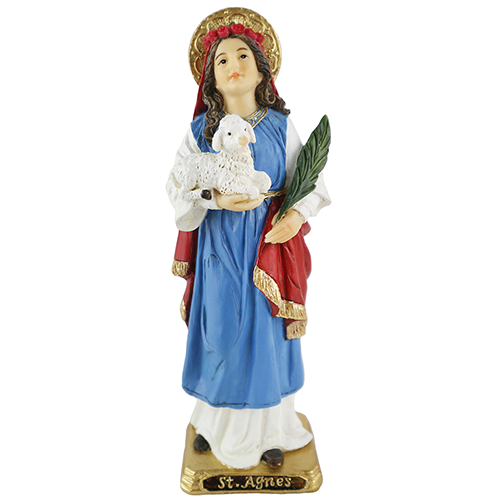Description
Hagiography
Santa Inés, by Francisco Pacheco (1608, Prado Museum ).
The details of his martyrdom come to us through a work called Acts of the martyrs written in the 5th century , that is, more than a century after the events he recounted.
According to this text, Agnes was a beautiful young woman from a noble Roman family . She had several suitors, whom she rejected for declaring herself a faithful lover of Christ . Among them was the son of the prefect of Rome, who denounced her father for being a Christian. In those times, Christians were under the persecution of Diocletian and were sentenced to death if they refused to sanctify the Roman gods.
She was tried and sentenced to live in a brothel where, miraculously, she remained a virgin. According to the Acts of her martyrdom, although she was exposed naked, her hair grew so that it covered her body. The only man who tried to abuse her was blinded, but Inés healed him through her prayers. She was later sentenced to death, and, when she was going to be beheaded, her executioner tried to get her to abjure her, to which she replied:
It would be an injury to my Husband if I tried to please another. I will give myself only to the one who first chose me. What are you waiting for, executioner? Perish this body that can be loved by eyes that I hate.
Last words of Saint Agnes
She was buried in the Via Nomentana . A few days after her death, her best friend and foster sister, a girl her age named Santa Emerenciana , was found praying at her grave; when a Saint Emerenciana rebuked the Romans for killing her friend, she was stoned to death by the mob.
Even when the veracity of the historical source that narrates the details of the martyrdom is questioned by Christian historians, there are mentions of the martyr in other writings of the time, such as, for example, the Depositio Martyrum of the year 354 and the Epigrams of Pope Damasus . The poet Prudentius echoed the golden legend in his collection of acts, which was long wrongly attributed to Ambrose of Milan .
Tributes
Constantine ‘s daughter Constantina had the basilica built after her on the via Nomentana . Numerous lives of this saint and works of art were made during the Middle Ages : there are reliquaries and statues in the city of Rome , especially the one made by Ercole Ferrata (Saint Agnes in the flames).
Due to the root of his name ( Agnus , Latin for “lamb”), on January 21 , his feast day, the lambs from whose wool the archbishops ‘ pallium will be woven are blessed . The pallium is an ornament of white wool with six black crosses, which is placed on the shoulders and has two bands that fall on the chest and back. It is worn by the pope and the metropolitan archbishops. It is a symbol that shows the close union with the Roman pontiff and the mission of shepherding, which is why they are made from the wool of lambs. The new archbishops receive the pallium on June 29 , the solemnity of Saints Peter and Paul.









